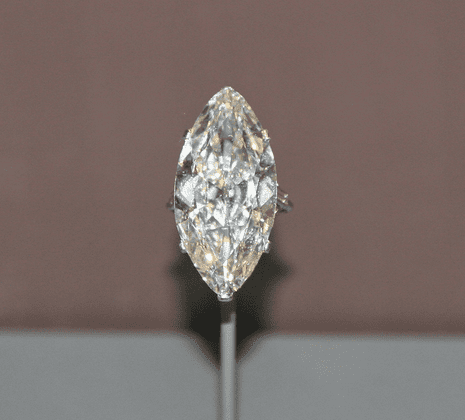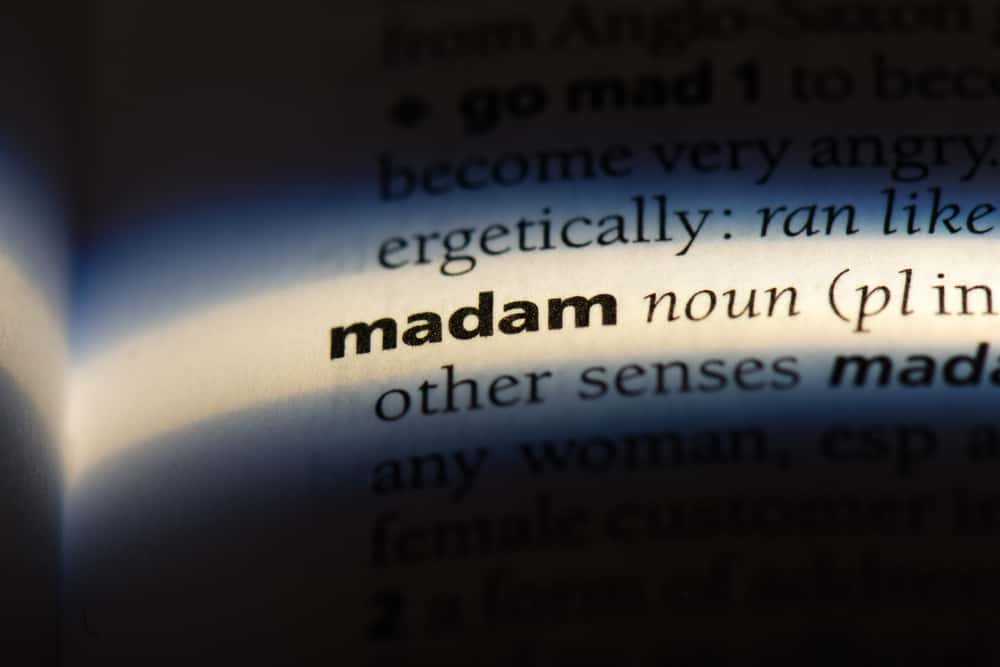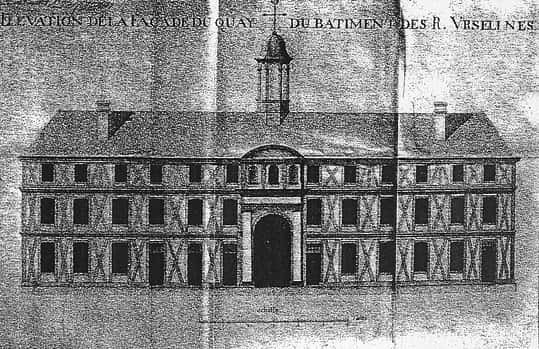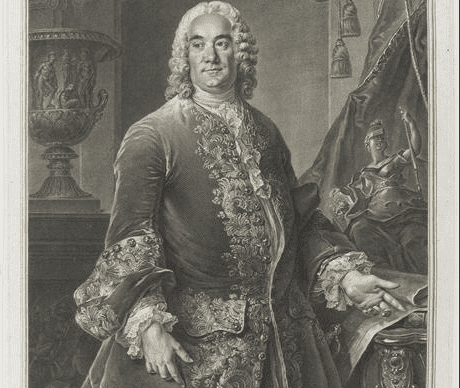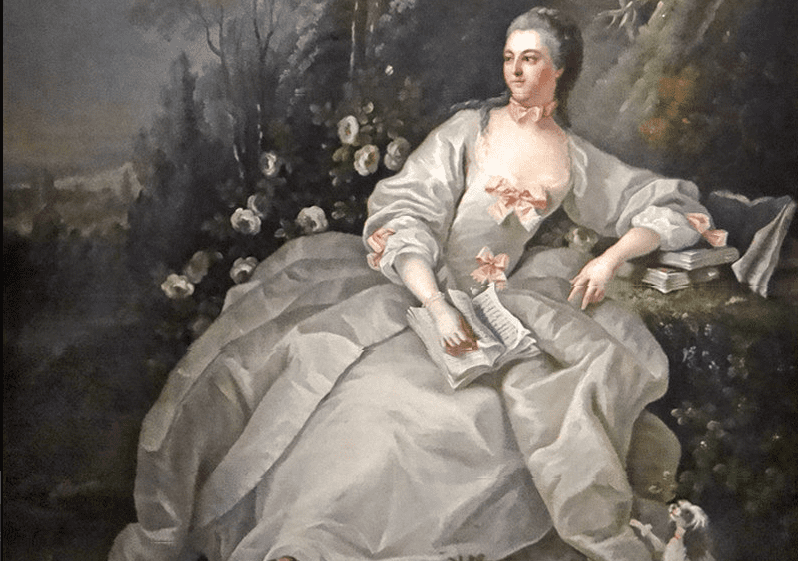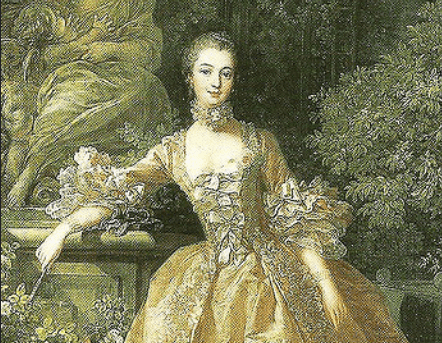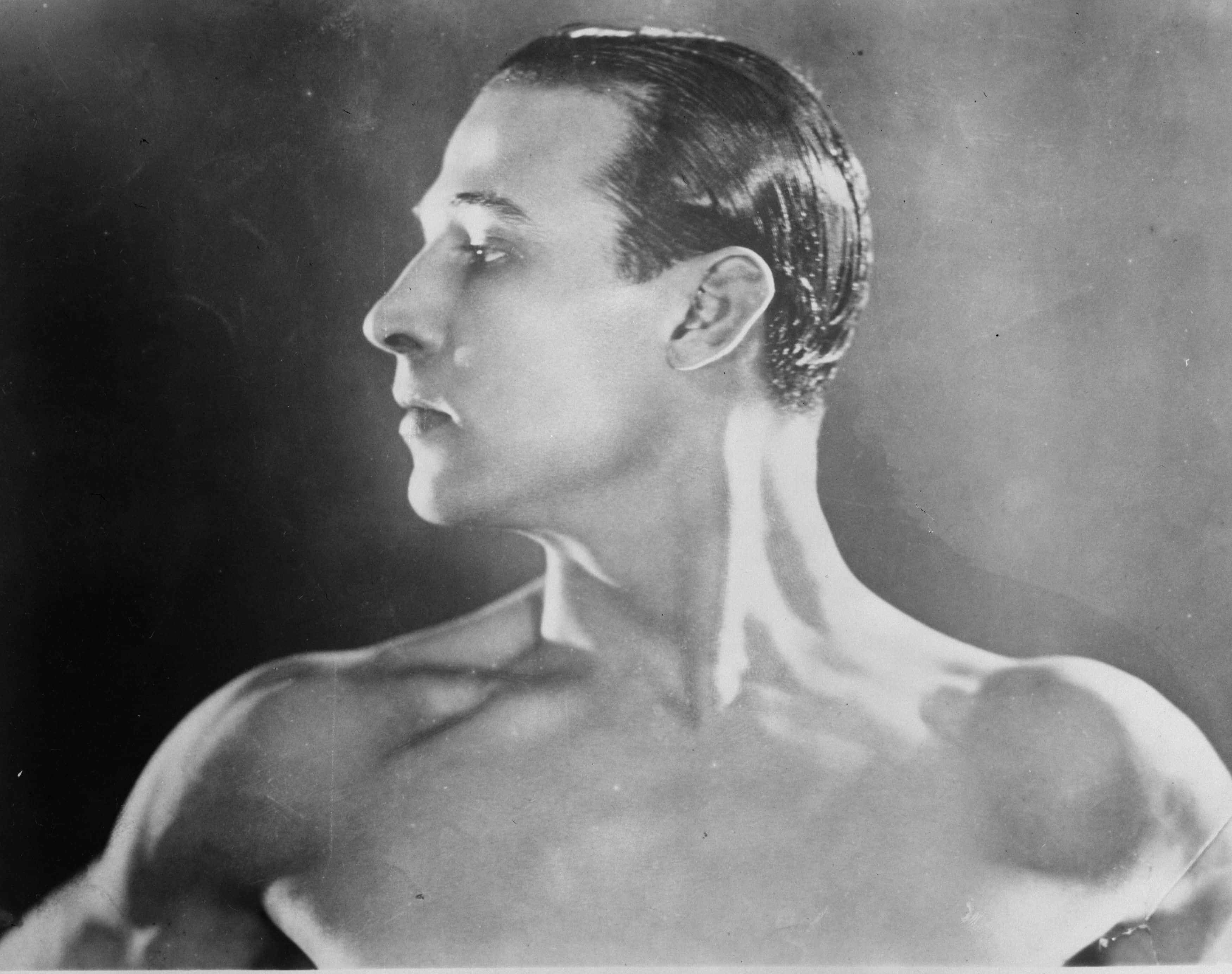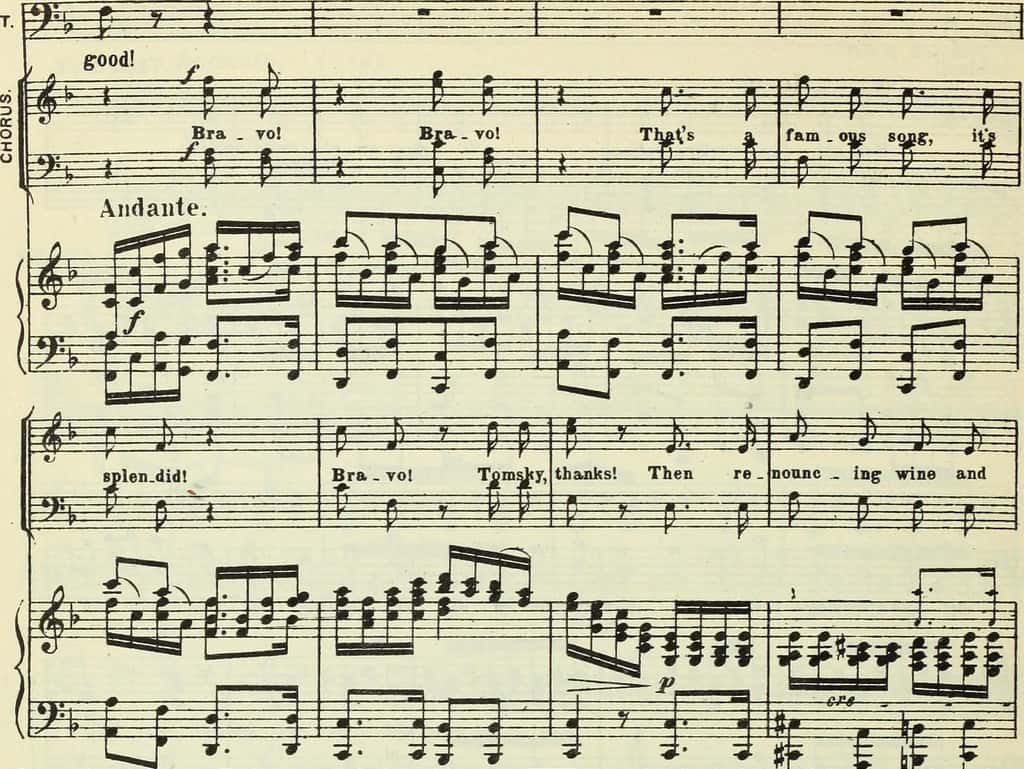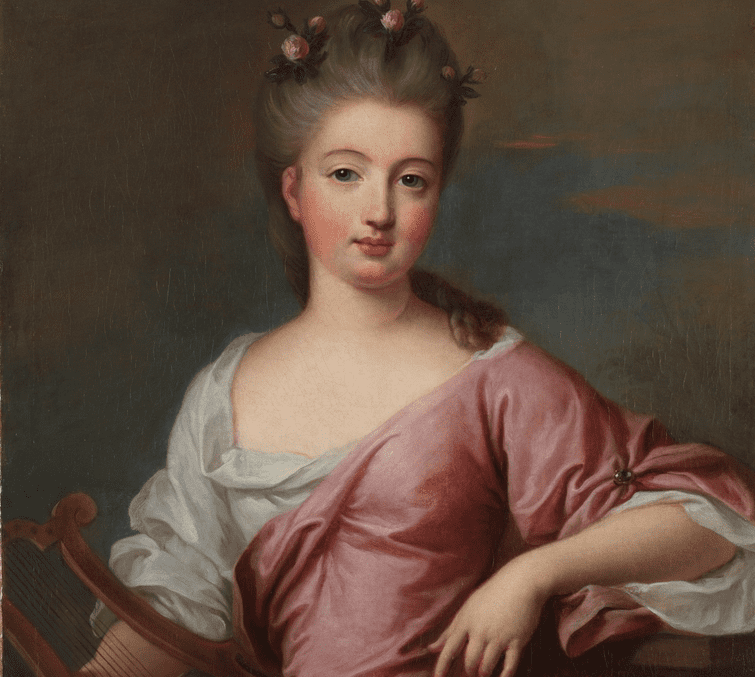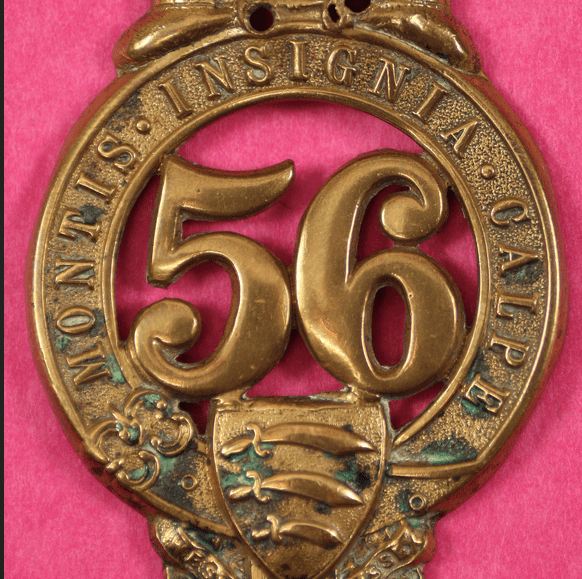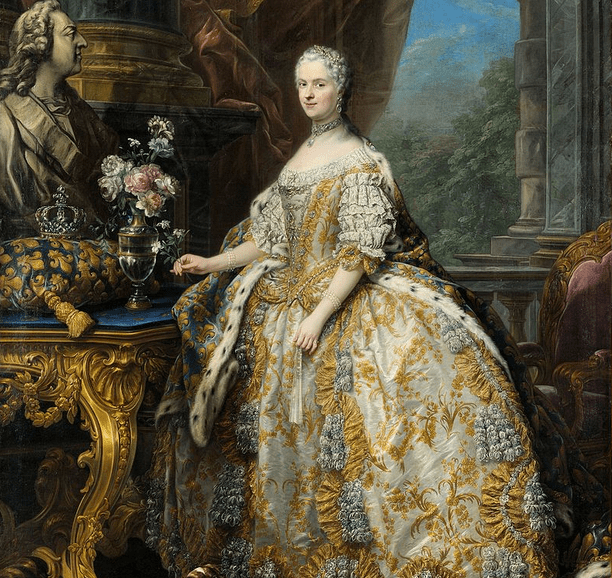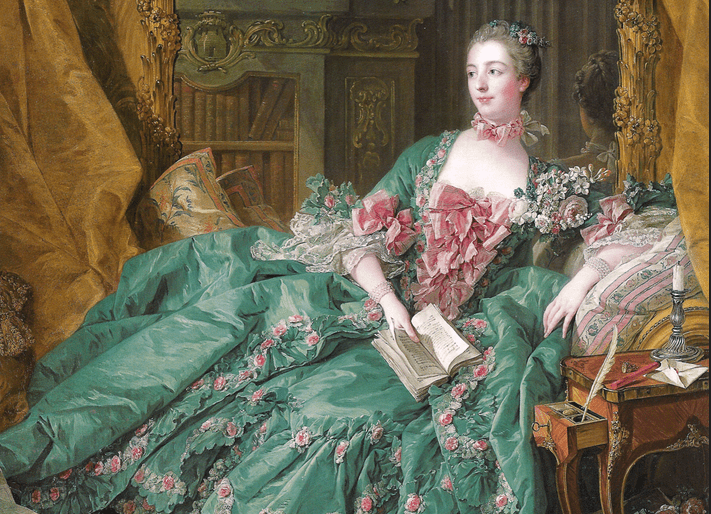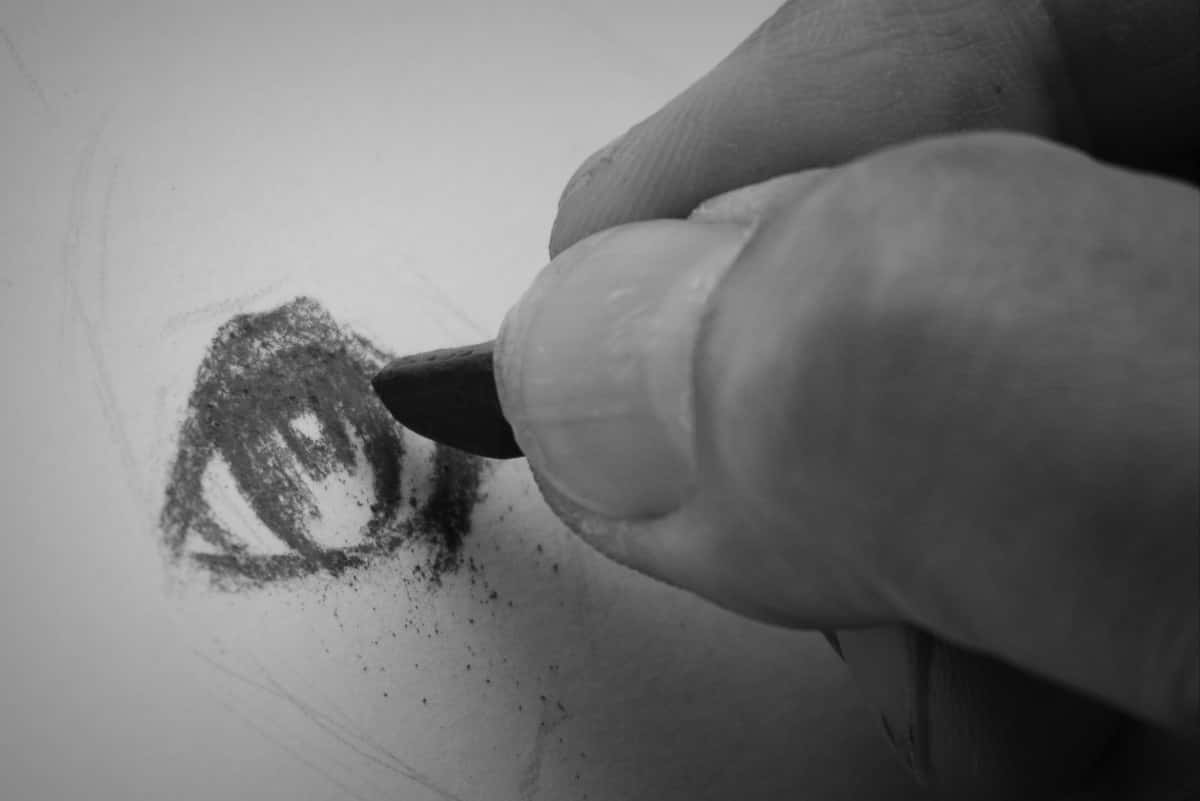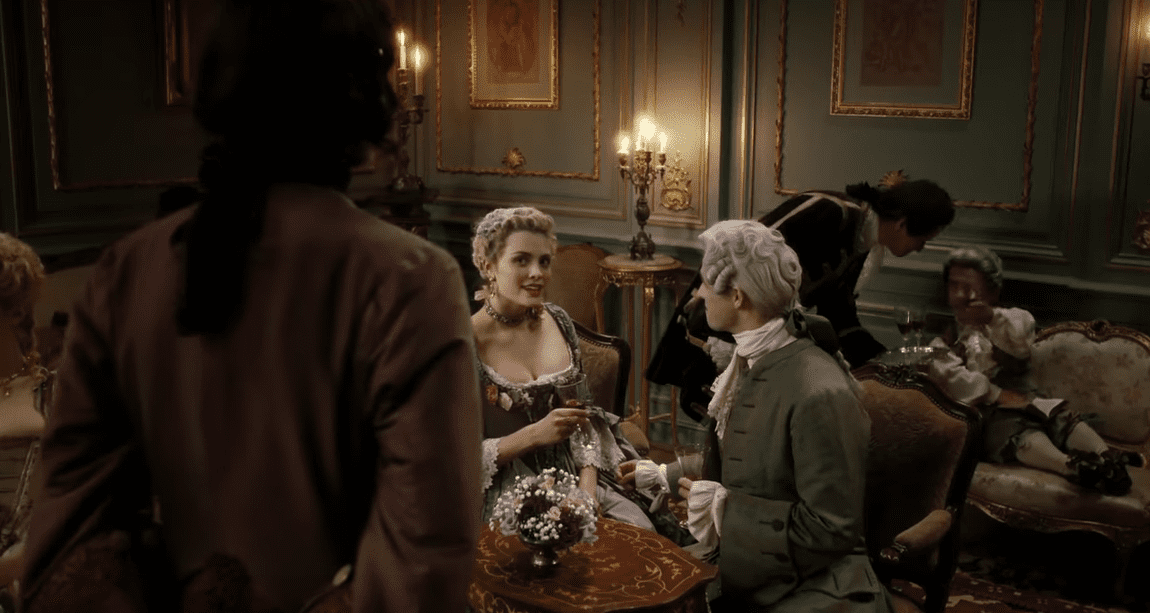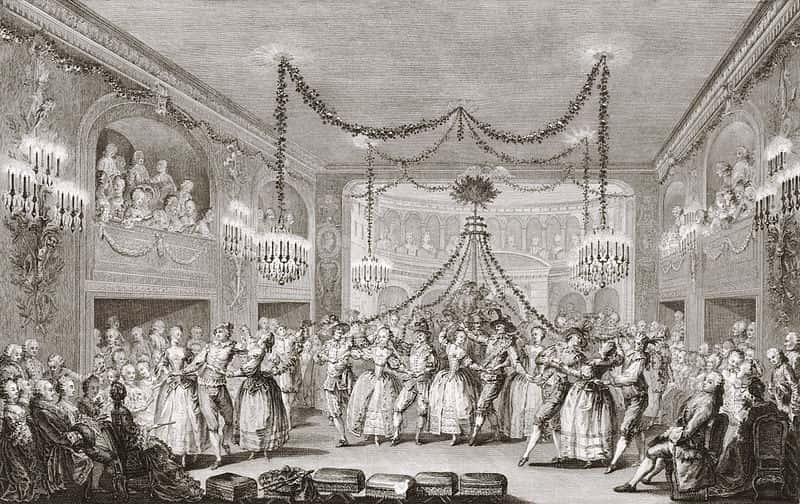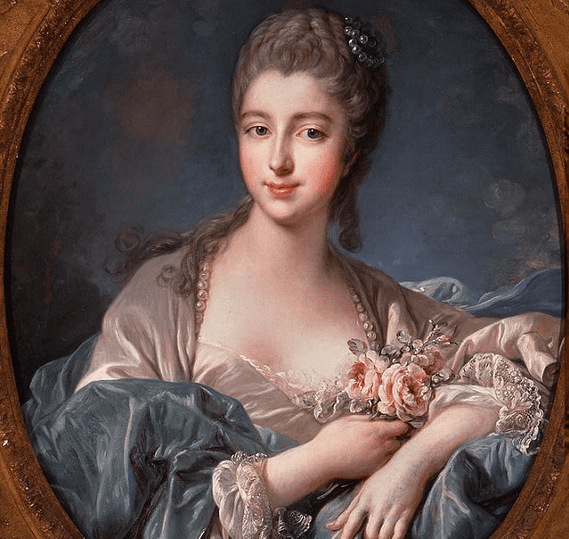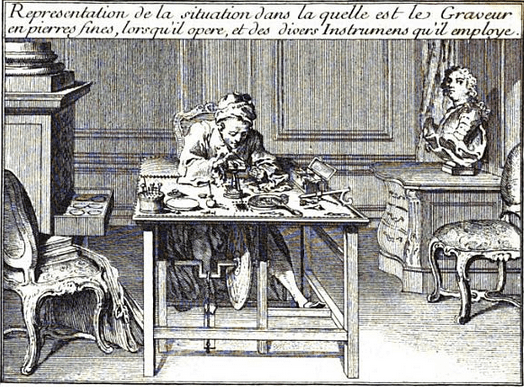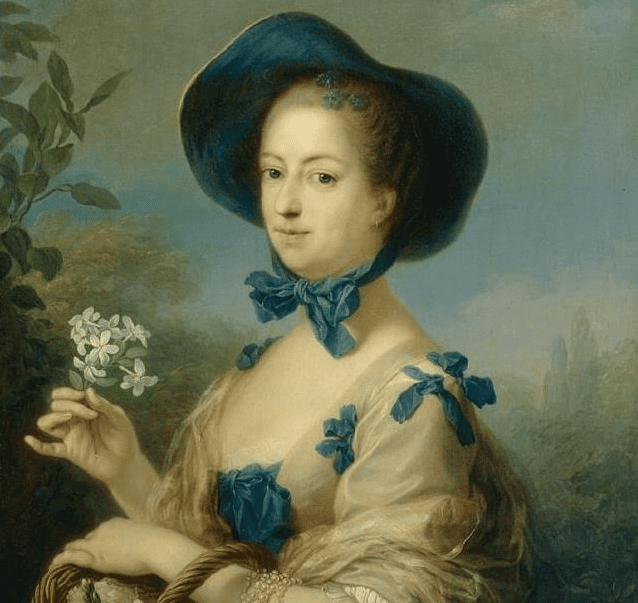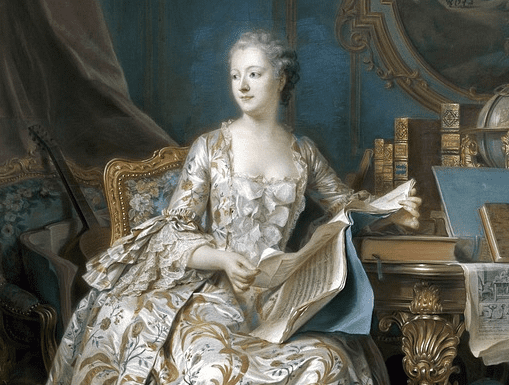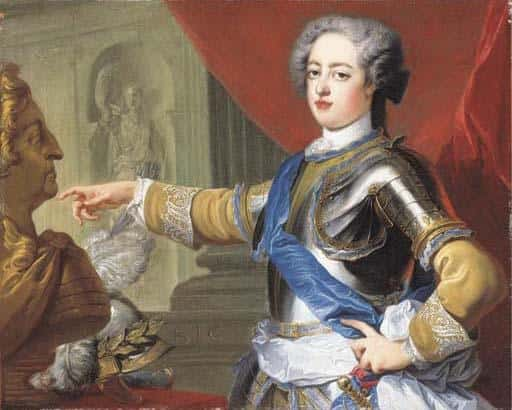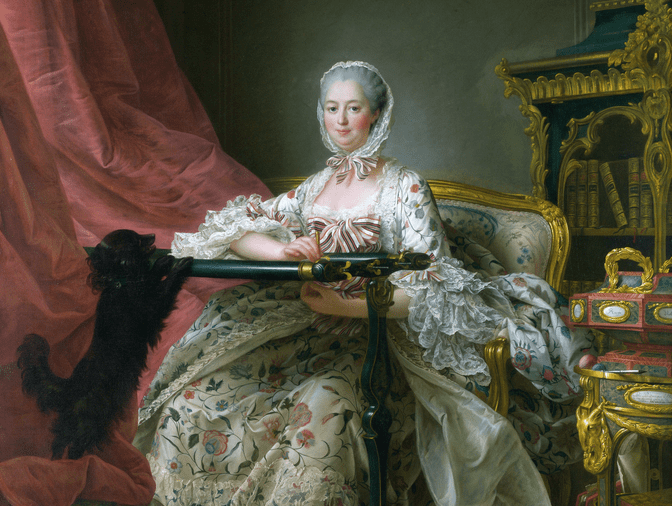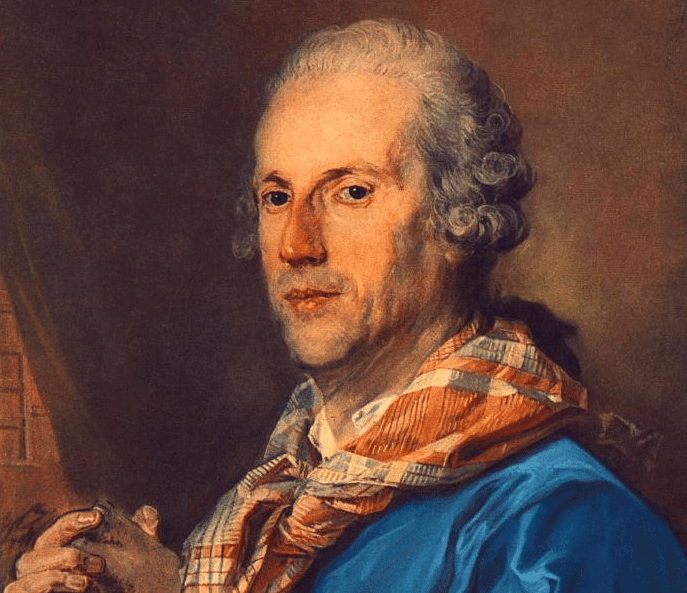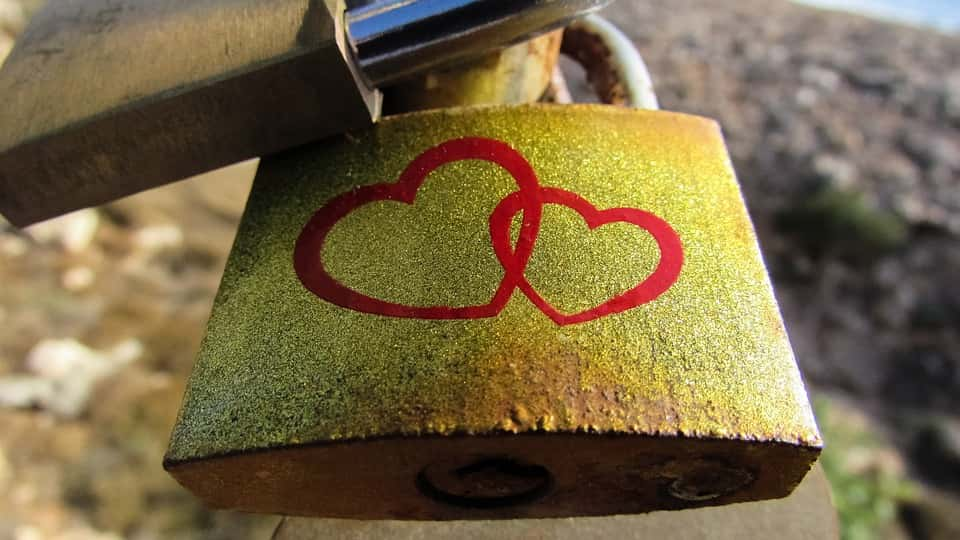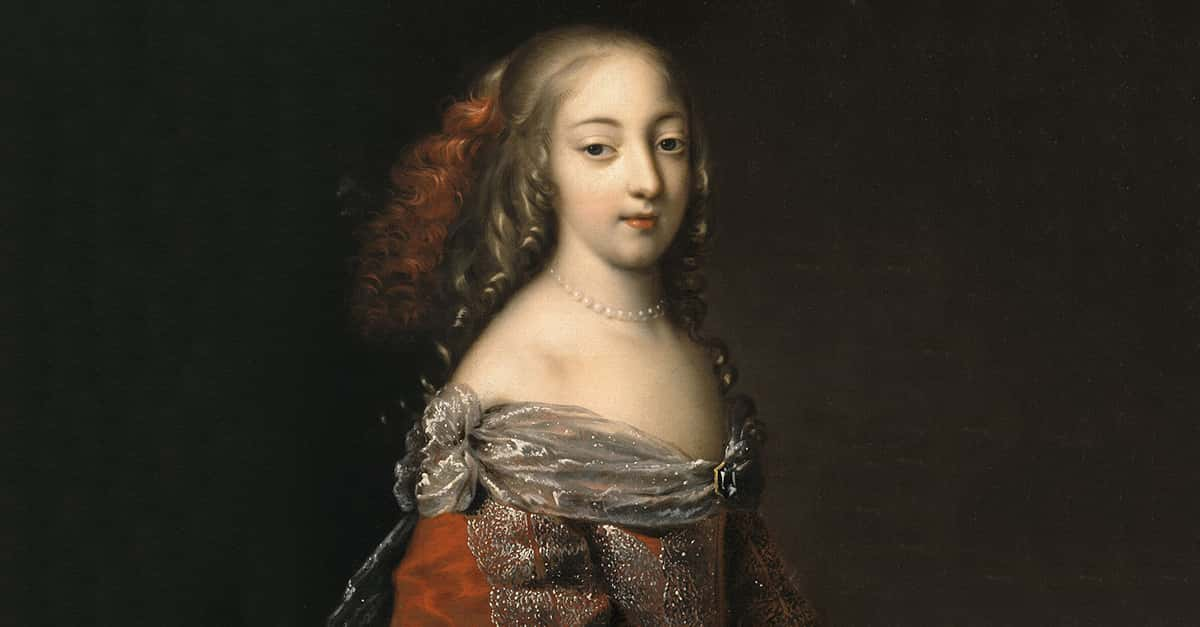While some would scorn at the idea of a mistress doing anything productive—and indeed, she had many enemies in her lifetime—Pompadour proved to be deeply influential and beloved in her time. She not only shared the bed of the king but also shared his power, to the benefit of many.
Even after her death, her legacy lived on in European history and later, pop culture. Yet what do we really know about this fascinating woman? How did she gain the eye of the king? Here are 42 devious facts about Madame de Pompadour.
Madame de Pompadour Facts
42. Paging Ms. Poisson?
Pompadour’s full name was Jeanne Antoinette Poisson. She was born on December 29, 1721.
41. Deadbeat Dad?
A terrible scandal emerged when Pompadour’s father, Francois Poisson, was revealed to be a have several outstanding debts. He was forced into exile from France in 1725 and wasn’t able to come home until the charges were cleared eight years later. Frankly, though, he should’ve counted himself lucky, since failure to pay debts had the death penalty in those days!
40. Diamonds Are Forever
Peculiarly, there is a long-standing rumor that King Louis XV commissioned the “marquise cut” diamond to be shaped like Pompadour’s mouth. This diamond cut is also known as the “navette.”
39. A Title Full of Pomp
Pompadour’s famous name stemmed from the title which Louis XV purchased for her in June 1745. Her official title was the Marquise of the estate called Pompadour. However, she became known as Madame de Pompadour instead.
38. Sick Note Unavailable
When she was 5 years old, Pompadour began her education at an Ursuline convent in Poissy. At this time, that was the best education one could gain. However, due to illness, Pompadour left the convent four years later and went home again.
37. Thanks, Norm!
One important figure in Pompadour’s life was Le Normant de Tournehem, a tax collector. After Pompadour’s father was exiled, he became her legal guardian. When Pompadour was forced to leave her education due to illness, it was de Tournehem who arranged for tutors to give her a full education.
36. Let’s Get Married
When Pompadour was 19 years old, she married into the family of her guardian, Le Normant de Tournehem. She married his nephew Charles Guillaume Le Normant d’Ettioles, who later became de Tournehem’s sole heir in 1740.
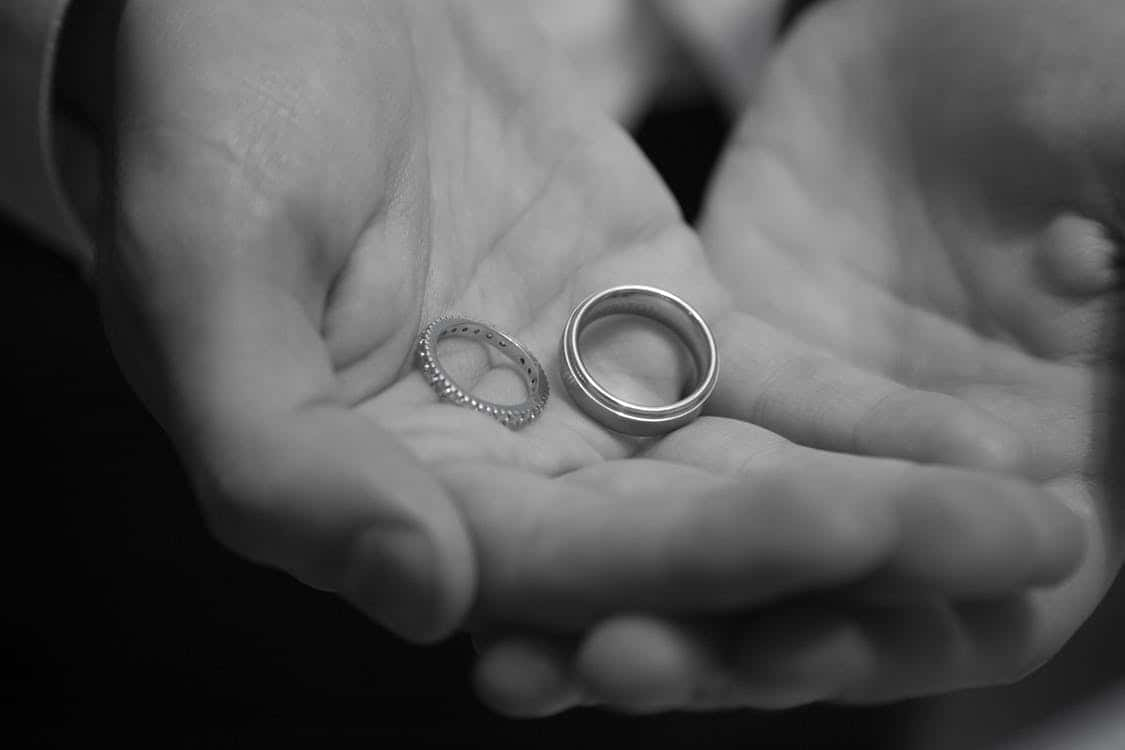 Pexels
Pexels
35. Star-Gazing
Pompadour’s fame began when she and her wealthy husband began attending famous salons held in Paris. At these get-togethers for the rich and powerful, Pompadour would cross paths with such legendary French figures as Helvetius, Montesquieu, and Voltaire. We know that these people were famous because they only needed a single name to be remembered!
 Wikimedia Commons Voltaire
Wikimedia Commons Voltaire
34. Growing Up Some More
While Pompadour had reportedly been very quick-witted and bright as a child, her reputation for wit and intelligence didn’t truly emerge until she became a regular member of the salons, where she received her education in courtly behavior and wide knowledge of subjects for meaningful conversations.

History's most fascinating stories and darkest secrets, delivered to your inbox daily.
33. A Shining Social Circle
Pompadour would be the host of her own salon at Etiolles, the estate of her husband’s family. By that point, she had made so many acquaintances with the rich and powerful that they readily traveled to attend her salon.
Voltaire, in particular, was a frequent guest, and she later became one of his patrons during her time as mistress to King Louis XV. They remained on friendly terms until her death, which Voltaire would famously write about in mourning.
32. Her Reputation Precedes Her
Before Louis XV and Madame de Pompadour actually met, the king had actually heard of her as early as two years prior. Such was her reputation by that time as a social butterfly that the king already knew who she was before her stunt on the hunt, to be blunt.
31. Someone’s Got to be First
Pompadour was first portrayed on film by Paulette Duval in the 1924 silent film Monsieur Beaucaire. Based on the 1900 novel which shares its name, the film was a box office disappointment for its star, Rudolph Valentino. The novel would go on to be adapted several more times over the years for the stage and screen.
30. Jealous Lover
Interestingly, one of the main obstacles blocking Pompadour from being King Louis XV’s mistress was his then-mistress at the time. Her name was Madame de Chateauroux, and she naturally worked to prevent Louis from getting too close with Pompadour. However, this ended when Chateauroux passed away on December 8, 1744.
29. Second Meet-Cute
Pompadour was given her first formal invitation to the Palace of Versailles when a masked ball was held on February 25, 1745. The ball was held to celebrate the wedding of the Dauphin Louis de France to Maria Teresa of Spain.
Louis outdid everyone else by dressing up as a yew tree, which was apparently such an ambitious costume that it required seven other courtiers to pull it off! Pompadour attended while dressed as Diana, who was the Roman goddess of the hunt, a fitting reference to how she’d first met the king.
We can assume that Louis appreciated that reference because he chose that ball to unmask himself to her and publicly declare his affection for Pompadour.
28. Name Drop!
In 1890, Russian composer Pyotr Ilyich Tchaikovsky premiered his opera The Queen of Spades, which takes place during the reign of Catherine the Great. In its second act, one of the characters reflects on great women of the past, and names Pompadour.
27. Moving Up in the World
Pompadour became the king’s official mistress by March of 1745, when she took up her abode in the Palace of Versailles. Her apartment was right above the king’s, in case anyone was confused by her reasons for being there.
26. Thanks, Cuz!
Despite her residence in the Palace of Versailles in the spring of 1745, Pompadour didn’t have a formal entry at the royal court until the fall of that year. She was introduced by the Princess de Conti, who was the cousin of Louis XV.
25. Jolly Good!
From 1755 to 1881, the British Army had a regiment called the 56th Regiment of Foot, also known as the West Essex. They were nicknamed the “Pompadours” as their uniforms had purple facings.
Purple had been Pompadour’s favorite color, though being soldiers, the men of the 56th spread the rumor that it had also been the color of her undergarments. Both the color facings and the nickname were passed onto the Essex Regiment.
24. Bye, Mom
Despite all the efforts of Pompadour’s mother to prepare her daughter to win the heart of the king, she did not live to see her efforts rewarded by seeing Pompadour become the chief mistress. She died on the Christmas of 1745, so she at least presumably got to see her daughter gain the honor of becoming a mistress.
23. The Mistress and the Queen
You’re probably thinking about how awkward and toxic Pompadour’s relationship with Louis XV’s wife, Queen Marie Leszcynska, must’ve been. However, their relationship was completely cordial, if the accounts are to be believed.
Pompadour eagerly tried to make friends with the queen on their first meeting, and the queen accepted her graciously. At the height of Pompadour’s influence, she was raised to serve as a lady-in-waiting to Queen Marie, which gave her a lot more power than she already held by that point.
22. Best Friends Forever
Pompadour proved herself highly important to Louis XV, due to her being the only person able to tell him the truth no matter what. In addition, Louis was prone to depressive moods and melancholy.
Pompadour was always able to help him through these moods or cheer him up with activities which he liked. In response, Louis gave Pompadour a lot of power and influence in his court.
21. The Mistress and the Doctor
In one of her more recent appearances in pop culture, Pompadour showed up as a character in the Doctor Who episode “The Girl in the Fireplace.” The episode follows the Doctor jumping in and out of Pompadour’s life in order to save her from a group of aliens.
Pompadour is played by Jessica Atkins and Sophia Myles in the episode, both of whom bizarrely kept their British accents for the role. Thanks to good writing—and an ending that we know made some of you cry—“The Girl in the Fireplace” won a Hugo Award for Best Dramatic Presentation and is one of the highest-rated episodes of David Tennant’s era as the Doctor.
20. In Good Company
One of the men who would paint Pompadour’s portrait was Maurice Quentin de La Tour. Recognized by the Royal Academy of Painting and Sculpture in Paris, de La Tour became a highly acclaimed artist who painted portraits of some of the most famous figures in the Enlightenment era. These didn’t just include Pompadour, but also King Louis XV, Queen Marie Leszcynska, Voltaire, Jean-Jacques Rousseau, and Emilie du Chatelet.
19. A Performance that Delivers (Heh)
Recently, Amazon released the TV movie Casanova, starring Diego Luna. The film also included Pompadour as a character. She was played by Serbian actress Bojana Novakovic.
18. All Life’s a Stage
One of Pompadour’s chief talents was stage acting. During her time as Louis XV’s mistress, she would put on private productions at Versailles. Sadly, this was before the Tony Awards, so we’ll never know just how talented she was.
17. You’re Welcome!
Naturally, Pompadour would become a patron of the arts, in all their forms. She would play an important role in “making Paris the perceived capital of taste and culture in Europe.”
16. Playing Dress-Up
Pompadour began a trend when she would pretend to be a peasant by aping their attire. This would later be continued by Marie Antoinette, who went one step further by having golden milk churns. Because nothing makes you think of French peasantry more than solid gold objects.
15. Speaking of Cup Size…
One long-standing legend is that the shape of the French champagne glass, also known as the coupe, was originally modeled after the size and shape of Pompadour’s breast. It remains unconfirmed whether this is true, but the story has endured across history.
14. No Need to Thank Me
Pompadour’s enemies liked to blame her for France’s defeat in the Seven Years’ War, as it was well-known that she was one of Louis XV’s closest advisors. The irony is that while her responsibility for France’s defeat was questionable at best, it is historical fact that Pompadour supported a number of important ministers such as Bertin and Machaut. These ministers would implement reforms to France’s infrastructure, trade, and taxes which would eventually lead to France becoming “the richest nation in the world.”
13. Heck of a Lady
One of the people who most benefited from having Pompadour as their patron was Jacques Guay. Guay was an engraver of gemstones, a very rare and highly valued profession. In gratitude for her support, Guay would pass on his engraving skills to Pompadour herself. This made Pompadour “one of the few eighteenth-century practitioners of gem engraving.” Not too shabby!
12. No Parent Should Have to Bury Their Children
Pompadour and her husband, Charles Guillaume, had two children together. Tragically, they both died young. Their son died while still in infancy and their daughter, Alexandrine Le Normant D’Etiolles, died at the age of 9 in 1755.
11. Nothing Off the Top!
One of the most long-lasting aspects of Pompadour’s legacy is the hairstyle which was named after her. This elaborate hairstyle, which involves one’s hair being worn straight up from the forehead and sides. This hairstyle endured for centuries after Pompadour’s death. It wasn’t just a hairstyle for women, either. Recent examples of men adopting the pompadour hairstyle in one form or another include Elvis Presley, Marlon Brando, David Beckham, Justin Timberlake, and Zac Efron.
10. A Sad Ending
In 1764, Pompadour fell ill due to tuberculosis. Louis attempted to look after her as best he could, but she succumbed to her illness. She was just 42 years old.
9. Après Nous, Le Deluge
One of the most famous quotes associated with Pompadour has become an expression in the French language. Translated, it means “after us, the flood.” This statement was made by Pompadour to comfort her love, Louis, after France’s terrible defeat at the Battle of Rossbach in 1757.
The statement has two possible meanings. Either it is a declaration that everything will collapse after Louis’ reign, or it is a declaration that it doesn’t matter what happens after Louis’ reign.
8. Worlds are Turned by Individuals
Such was Pompadour’s influence in Louis XV’s court that she was approached by foreign diplomats to assist in political negotiations! Specifically, the diplomat was Wenzel Anton Graf Kaunitz, and he requested Pompadour’s help in figuring out the 1756 Treaty of Versailles. This treaty was important because it turned the former enemies of France and Austria into allies. This alliance would prove crucial during the Seven Years’ War, which began just months after the treaty was signed.
7. Self-Fulfilling Prophecy?
When Pompadour was a little girl, she was taken to a fortune teller by her mother. The fortune teller allegedly foretold that Pompadour “would one day reign over the heart of a king.” Pompadour would later be groomed to fulfill that prophecy by becoming the mistress of King Louis XV.
She also gained a new nickname which would stay with her for the rest of her life: reinette. In French, this word means “little queen,” quite an ambitious name for such a little girl!
6. Broken Telephone Anyone?
Because of Le Normant de Tournehem’s devotion and care for Pompadour, a rumor emerged that he was actually the biological father of Pompadour! Of course, there is no proof for this claim, and it may very well have been idle speculation or even slander against Pompadour.
 shutterstock
shutterstock
5. Look Over Here!
Pompadour first tried to get the attention of King Louis XV when he was on a hunting expedition in 1744. The hunt was held nearby her own estate, and so she was allowed to follow the king’s entourage from a distance.
However, she wasn’t content with that arrangement, so she purposefully rode in the king’s path several times. To make doubly sure he couldn’t miss her, she was wearing a different-colored outfit each time she rode past him. Subtle!
4. From Lover to Friend
While on the outside, their relationship was happy and healthy, modern historians now know that the couple hid a dark secret behind bedroom doors. From 1750 onwards, Pompadour ceased being a sexual partner to Louis XV. They no longer actually made love. This was attributed to her very poor health. Over the years as Louis XV’s mistress, she suffered three miscarriages, and also “suffered the after-effects of whooping cough, recurring colds and bronchitis, spitting blood, … as well as an unconfirmed case of leucorrhoea.”
However, her bond to Louis did not dim, as she served as a “friend of the King,” maintaining her influence at court.
3. Sour Spouse
Pompadour’s husband, Charles Guillaume le Normant, was deeply upset by her becoming the king’s mistress, though there was hardly anything he could do about it.
Surprisingly, his own father—and Pompadour’s guardian—approved of Pompadour’s social climbing and gave his blessing. We can only imagine the arguments that father and son had about that particular disagreement!
2. A Bitter Parting
Pompadour’s husband remained a sore sport about his wife abandoning him for the king, never forgiving her. For his part, Louis offered Le Normant a prestigious position as the French ambassador to Turkey—and yes, this was also a convenient way to get Le Normant away from Paris.
However, Le Normant refused the position, which led Louis to instead set up a legal separation for Le Normant and Pompadour. Le Normant would go on to have several affairs of his own, fathering several children with a dancer named Marie-Aimee Maltha. She would later be married to LeNormant after Pompadour’s death, and they would live together until Le Normant himself died in 1799.
1. Connections Stronger Than Sex
Contrary to what you might think, Pompadour did not block King Louis XV from seeking out other mistresses when she no longer held that position. She reportedly maintained that she was uninterested in what Louis got up to with other women, so long as she kept a hold on his heart. If such was the case, Pompadour was successful: Louis was loyal to her until her death.




